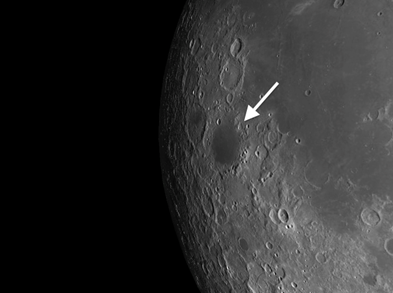
Whatever the cause (or the causes) of the transient lunar phenomenon is, it definitely shows us that there is still a lot to do.
#Lunar transient phenomena full#
(You can find the full NASA report here ) The project revealed that In 1955-56 NASA performed the Moon-Blink experiment, the surveillance of the Moon, using the network of 11 telescopes fitted with specially designed Moon-Blink detectors.

Intrigued by these and many other TLP reports, NASA decided to carry out their own observations and see if those claims were true. NASA research of the transient lunar phenomenon Linne is relatively small, therefore the resolution of a ground-based telescope combined with less-than-perfect observational conditions could result in crater appearing differently or not being seen at all. Possible explanationĪs exciting as it would be, there are no “changes” going on in this crater. These days we see it as a cone shaped crater 2.4 km across and 600 m deep. Later observations gave contradictory results regarding the size, appearance and the very existence of this crater. In 1866 German astronomer Johann Schmidt, who spent most of his life studying the Moon (and even drew a new improved map of the Moon), said that Linne crater changed and now looked more like a white cloud. Linne crater appeared on their map as a feature about 10 km wide. Two German Astronomers Beer & Madler drew the first reliable map of the Moon in 1834. It was first described in the 17th century by Italian astronomer Riccioli as a regular crater 7 km across. Linne is a very well studied impact crater on the Moon. It is possible that Hershel saw that very spot more than 200 years ago! Well, it was rather a “hot spot” back then. Moreover, armed with the astronomer’s description of the event’s location, the authors found the young impact crater (the so-called cold spot) in that area. The dates coincide with Herschel’s observations. The “impact melts” could heat up the matter enough for it to glow red! Lyrid shower is an annual April meteor shower that lasts from Apr 16 to Apr 25. The authors propose that the red spots observed by Hershel might have been the result of a meteor from the Lyrid shower striking the lunar surface. Last week a new article was submitted to ArXiv, the paper with a very long title “ Comments regarding William Herschel April 1787 report of an erupting volcano on the moon: were these observations the manifestation of Impact Melt, produced by a meteorite from the Lyrid meteor shower?” (hope you made it to the end of the title). But what could those red flashes be then? Unfortunately, there was no volcanic activity on the Moon in the last 100 million years. He concluded that he saw the lunar volcanoes erupting! Possible explanation On Apfamous astronomer William Herschel (yes, the very guy who discovered planet Uranus) observed three red flashes on the Moon. More than 2000 reports of the TLP have been recorded, coming from amateur skywatchers, reputable scientists and even Apollo astronauts.Įxamples Hershel’s observation of the “erupting volcano on the Moon” These events can appear as bright flashes, reddish patches, dark patches or even fizzy patches on the lunar surface! The events vary in duration, lasting from a few seconds to several days. TLP is an event when a part of the surface of the Moon changes colour or appearance for a short period of time.

Take transient lunar phenomenon (TLP), for example. And, despite all our observations and research, we still don’t have a good idea of what’s going on out there. We can watch Supernovae explode, exoplanets orbit their stars and even black holes feed on their stellar companions!īut some things happening in the close proximity of our planet have been puzzling scientists for hundreds of years.

Thanks to our modern technology there is a lot we can see from Earth.


 0 kommentar(er)
0 kommentar(er)
